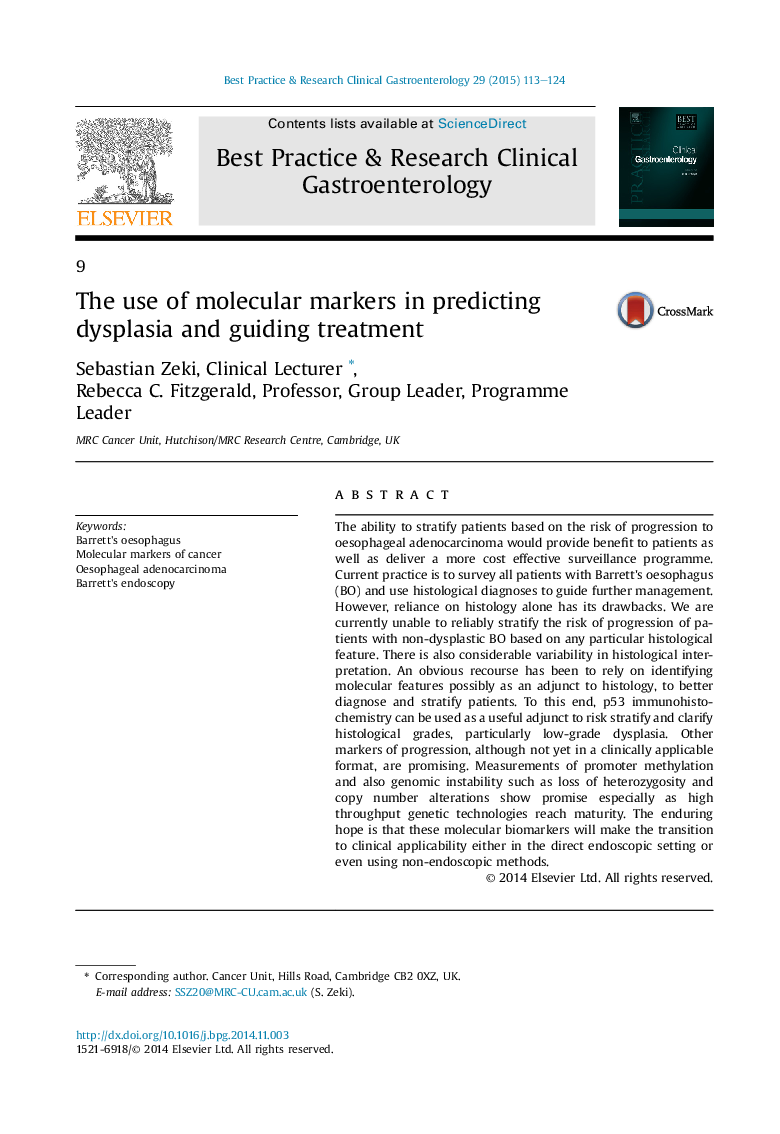| کد مقاله | کد نشریه | سال انتشار | مقاله انگلیسی | نسخه تمام متن |
|---|---|---|---|---|
| 3254414 | 1207200 | 2015 | 12 صفحه PDF | دانلود رایگان |
The ability to stratify patients based on the risk of progression to oesophageal adenocarcinoma would provide benefit to patients as well as deliver a more cost effective surveillance programme. Current practice is to survey all patients with Barrett's oesophagus (BO) and use histological diagnoses to guide further management. However, reliance on histology alone has its drawbacks. We are currently unable to reliably stratify the risk of progression of patients with non-dysplastic BO based on any particular histological feature. There is also considerable variability in histological interpretation. An obvious recourse has been to rely on identifying molecular features possibly as an adjunct to histology, to better diagnose and stratify patients. To this end, p53 immunohistochemistry can be used as a useful adjunct to risk stratify and clarify histological grades, particularly low-grade dysplasia. Other markers of progression, although not yet in a clinically applicable format, are promising. Measurements of promoter methylation and also genomic instability such as loss of heterozygosity and copy number alterations show promise especially as high throughput genetic technologies reach maturity. The enduring hope is that these molecular biomarkers will make the transition to clinical applicability either in the direct endoscopic setting or even using non-endoscopic methods.
Journal: Best Practice & Research Clinical Gastroenterology - Volume 29, Issue 1, February 2015, Pages 113–124
